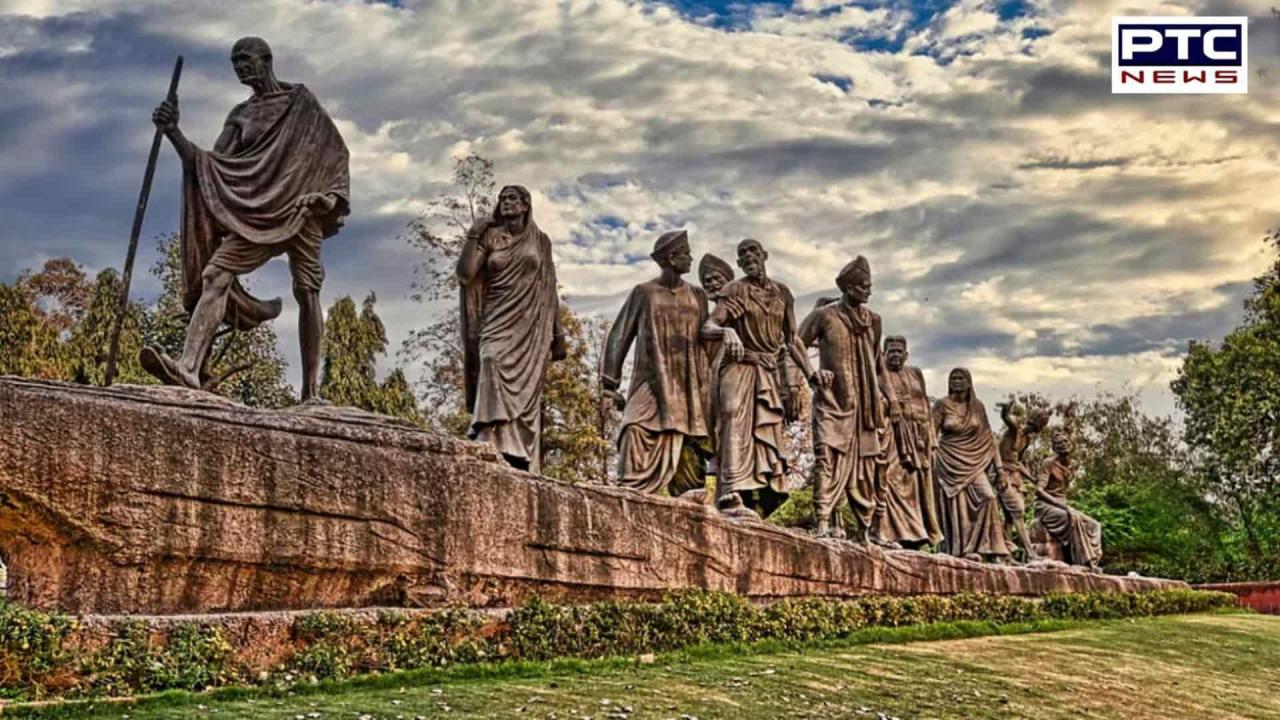

India's independence struggle: Significant moments in the freedom struggle leading to India's independence
PTC News Desk: India has a long and diverse past, filled with hardships as well. India fought a protracted war to gain its independence from the British Raj, spending 200 years in exile.
Even though the Indians were battling for their freedom day in and day out, on August 15, 1947, numerous significant events rocked the British monarchy and caused India to finally realise that it was free.
In honour of India's 78th Independence Day, let's review some significant moments during the Freedom Struggle:
Indians banded together against the British Raj for the first time during the Sepoy Mutiny, popularly known as India's First War of Independence. The East India Company's dominance over India was overthrown by this uprising, and its authority was transferred to the British Crown in 1858.
The Indian National Congress was founded in 1885. Along with the Muslim League, it rose to prominence and led the country in the Freedom Struggle.
The Father of the Nation, Mahatma Gandhi, left South Africa and returned to India in 1915.
Congress and the Muslim League came to an accord known as the Lucknow Pact. Muhammad Ali Jinnah has a significant part to perform. As a representative of the Congress and the League, he persuaded both organizations to pledge to increase pressure on the British to take a more liberal stance toward allowing Indians to rule their own.
Gandhi led the Champaran farmers' insurrection in 1917 because they were being compelled to plant indigo and were not even receiving fair compensation for it.
In 1919, an order prohibiting public gatherings was issued by the British government as retaliation against civilians for their "disobedience." On April 13, thousands of Indians celebrated the celebration of Baisakhi at the Jallianwala Bagh in Amritsar, oblivious to this directive. General Dyer, the brigadier general, summoned troops and gave them orders to fire into the large crowd for ten minutes. So that no one could escape, the military had also barricaded the main entrance. To protect themselves, many dove into wells. According to British government statistics, the massacre claimed the lives of 350 individuals; however, Congress maintains that the death toll may have reached 1,000.
The Non-Cooperation Movement was sparked by this particular incident.
When Mahatma Gandhi became leadership of the Congress in 1920, the Non-Cooperation Movement was launched. People participated in the nonviolent movement by picketing alcohol stores, refusing to purchase British goods, and supporting regional artists and craftsmen. He traveled the nation educating the populace about the movement's principles. When a demonstration at the Chauri Chaura police station descended into violence in 1922, the movement was put to an end.
Subhash Chandra Bose left his lucrative career as an ICS employee in England in 1921 to become involved in the Indian independence movement. He became a member of the Congress soon after his return. He founded the "Swaraj" newspaper. In 1925, he was incarcerated and freed from prison in 1927. He was appointed Secretary of the Bengal State Congress and President of the All India Youth Congress upon his release. He was elected Mayor of Calcutta in 1930.
The Indian National Congress proclaimed India's independence on January 26, 1930, a declaration that the British did not acknowledge.
Gandhiji led a group of people in a peaceful civil disobedience action from the Sabarmati Asharam to Dandi beach in opposition to the oppressive salt tax that the British government had imposed.
The events of the following decade and beyond were set in motion by the Government of India Act and the drafting of a new constitution.
The establishment and operations of the Azad Hind Fauj, popularly known as the Indian National Army, or INA, during World War II, marked a significant turning point in the fight for independence.
With the intention of freeing India from British dominion, the Indian National Army was established from among the Indian prisoners of war. During his tour to Japan in 1943, Subhash Chandra Bose rebuilt the INA. He molded it into a potent tool for India's independence. There were over 45,000 soldiers in the INA. During the Second World War, Bose established a provisional government that was acknowledged by the Axis Powers in October 1943.
This effort was initiated on August 8, 1942, during the Bombay session of the All-India Congress Committee. The goal was to remove British rule from India. Gandhiji also urged people to "Do or Die" in his Quit India address, which he gave in Bombay.
In protest against the treatment of Indians in the Navy, 1,100 Indian sailors from the HMIS Talwar and the Royal Indian Navy (RIN) Signal School in Bombay went on a hunger strike on February 18, 1946. Ten thousand to twenty thousand soldiers joined the strike the following day.
Better food and working conditions were the strike's original goals, but soon after, the group also demanded independence from the British.
The sailors demonstrating also called for the liberation of all political prisoners, especially those belonging to the Indian National Army under Netaji Subhas Chandra Bose.
The Indian Independence Act was passed by the UK Parliament. British India would be split into India and Pakistan in accordance with the Act. Assent was granted by the Monarch on July 18, 1947, and the laws went into effect in India and Pakistan on August 14 and 15, respectively.
Also Read: Azadi Ke Hero: Indian freedom fighters who shaped the nation's destiny
- With inputs from agencies
